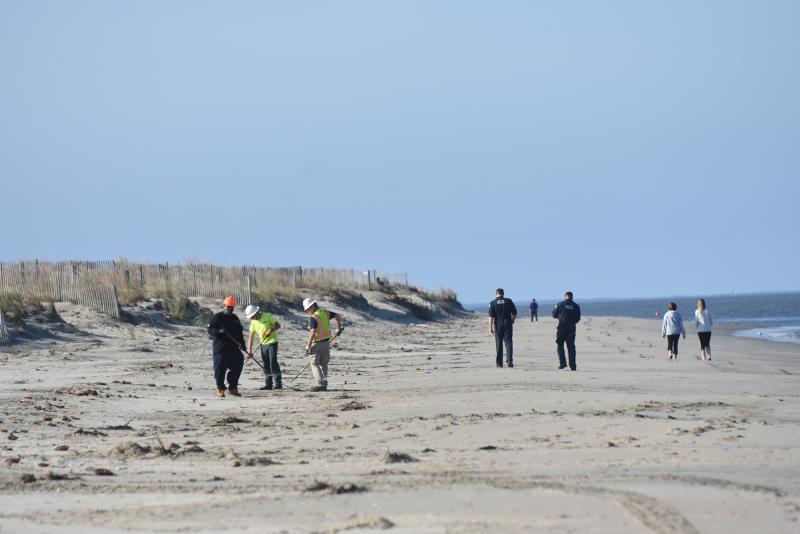State environmental officials and the U.S. Coast Guard have finished clearing several southern beaches of oily sand and debris, but Lewes Beach remains closed.
Cleanup crews for the unified command have cleared a significant stretch of coastline from the Indian River Inlet in Delaware to Assateague Island State Park in Maryland. Beaches cleared include Bethany, South Bethany, Fenwick Island, Ocean City, Assateague Island State Park, and part of Cape Henlopen State Park along the Atlantic Ocean.
The unified command under the U.S. Coast Guard, the Delaware Department of Natural Resources and Environmental Control, and the Maryland Department of the Environment stood down their on-site incident command post at the Slaughter Beach Memorial Volunteer Fire Company Nov. 4, after about two weeks of operations, and shifted to a remotely coordinated response.
Cleanup operations will go on and also shift resources to more affected areas as crews continue their process of validating beaches to be clear of oiled material and tar balls.
With Maryland beaches no longer affected, the MDE will step back from the unified command. The Coast Guard, DNREC and MDE will continue to monitor cleared beaches and continue daily evaluations of areas previously impacted but cleared. Cleanup crews may be dispatched to conduct remedial spot checks of areas as necessary.
“Our team came together to address an urgent threat to the environment, and though that threat isn’t over, we believe we have structures, procedures and relationships established to shift our cooperative efforts to manage cleanup remotely,” said Lt. Cmdr. Frederick Pugh, U.S. Coast Guard incident commander. “We will continue to watch areas that have been impacted and will shift resources as necessary.”
After an oil spill, winds and waves tear the oil into smaller pieces that can be scattered many miles along the coastline. The oil mixes with water and is changed in a process known as “weathering,” and it also mixes with sand and other marine debris. About 75 tons of oily debris has been removed by cleanup crews during this response. DNREC officials say the oily debris and tar balls will be disposed of in a special landfill designed for petroleum-contaminated material.
“We got tons of oily debris and weathered oil off our beaches, but we’re not done yet,” said DNREC Secretary Shawn Garvin. “Our experts continue to survey our coastline, assessing the cleanup operation, and as we move ahead, conducting final evaluations of our beaches to make sure the job is done.”
The cause of the oil spill remains under active investigation by the U.S. Coast Guard. If a source is identified, the responsible party would be required to reimburse the federal government for the cleanup operation.
As cleanup ends on individual beaches over the next several days, the public may still see small spots of oil or isolated bits of debris. The beach in Lewes remains temporarily closed, and beachgoers to other affected areas are strongly advised to stay out of the water and avoid walking along the wrack or high tide line.
The public is asked to continue reporting sizeable sightings of oiled debris or tar balls, or oiled wildlife.
For reports concerning the Delaware coastline, call DNREC’s toll-free environmental hotline at 800-662-8802. For reports concerning the Maryland coastline, call the Maryland Department of the Environment at 866-633-4686.





















































